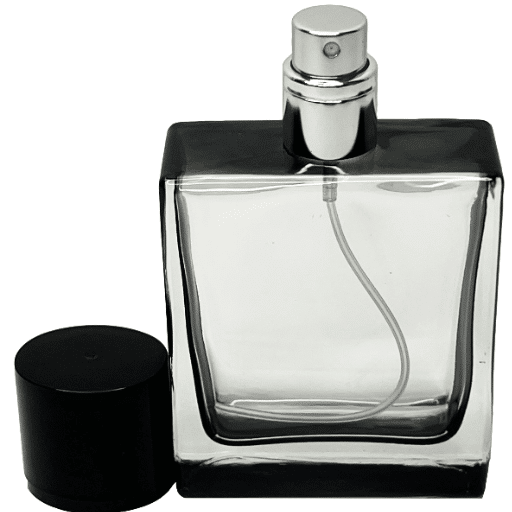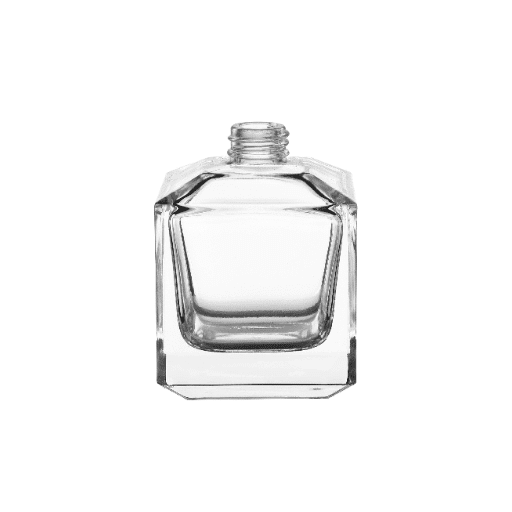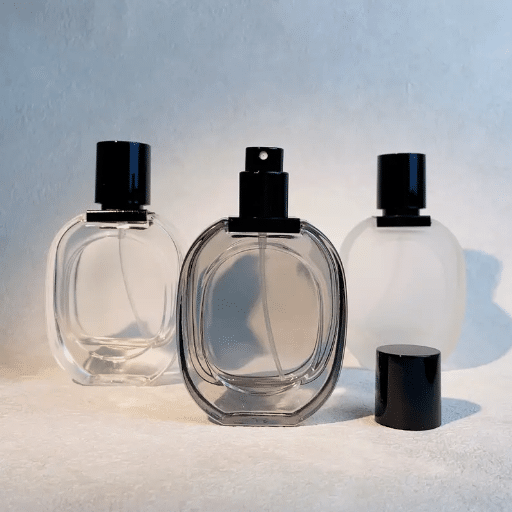The perfume bottle is more than just a container; it is a statement, a work of art, and an extension of the fragrance itself. Crafting custom glass perfume bottles requires a delicate balance of innovation, precision, and artistry, made possible by the expertise of top perfume bottle manufacturers. This article explores the intricate process of creating bespoke glass designs that not only preserve the integrity of the fragrance but also enhance its visual appeal. From design conceptualization to production techniques, we will guide you through the essential steps and considerations behind this elaborate craft. Whether you are a brand seeking to make a memorable impression or an enthusiast curious about the craft, this article will reveal how custom glass perfume bottles blend functionality with elegance to create a lasting impression in the world of luxury.
How Do Perfume Bottle Manufacturers Create Unique Designs?
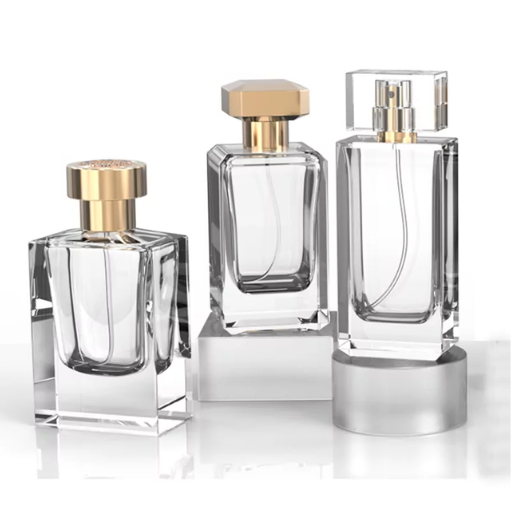
Perfume bottle manufacturers create unique designs by combining creative artistry with precise engineering to achieve both aesthetic appeal and functional integrity. Designers begin by sketching concepts that align with the brand’s identity and the perfume’s theme. These concepts are refined into detailed 3D prototypes using computer-aided design (CAD) software. Materials, such as high-quality glass, are chosen for durability and their ability to showcase the fragrance.
After a design has been established, a production technique like mold-casting or glassblowing is used to create the bottles. In addition, frosting, engraving, and metallic coating are done to bolster visual impact. The volumetric ease of using a bottle without losing its luxuriousness is also attended. Designs that stand out in a market flooded with competition are achieved through a careful blend of creativity and practicality.
What Role Does Custom Glass Play in Perfume Bottle Design?
Custom glass plays a pivotal role in perfume bottle design by allowing brands to create distinctive, eye-catching packaging that conveys luxury and sophistication. Through tailored shapes, intricate details, and unique finishes, custom glass ensures bottles reflect a brand’s identity while enhancing the sensory experience for consumers. The versatility of glass enables innovative design techniques, such as translucent or colored finishes and artistic embellishments, which elevate the product’s aesthetic appeal. Additionally, custom glass offers functional benefits, including durability and airtight seals that preserve the fragrance, aligning both aesthetic and practical objectives in perfume bottle creation.
How Are High-Quality Perfume Glass Bottles Made?
High-quality perfume glass bottles are crafted through a meticulous process that balances technical precision with artistic design. The production typically begins with the selection of premium raw materials, primarily silica sand, sodium carbonate, and limestone. These materials are melted at temperatures ranging from 2,500°F to 2,700°F (1,370°C to 1,480°C) in a high-capacity furnace to form molten glass.
Once the glass reaches the ideal viscosity, it is shaped using techniques such as blow-and-blow or press-and-blow molding, depending on the desired design and wall thickness. The blow-and-blow method is often employed when creating intricate shapes and lightweight bottles, while the press-and-blow method ensures uniform thickness, suitable for durability and strength. Tolerances for wall thickness generally range between 1.5mm and 3mm to ensure both structural integrity and a premium feel.
After shaping, the bottles undergo annealing, a critical step where they are slowly cooled in an annealing lehr to relieve internal stresses. This process ensures that the bottles maintain structural stability under varying environmental conditions. Surface treatments, like chemical or heat coatings, are often applied to enhance scratch resistance and improve durability.
Finally, aesthetic enhancements — such as frosting, coloring, or engraving — are applied using advanced techniques like acid etching, spray coating, or laser engraving, ensuring alignment with branding and design objectives. The thorough inspection phase employs both automated and manual quality checks to detect imperfections, ensuring the final product meets stringent cosmetic and functional standards. Quality benchmarks often adhere to international standards like ISO 9001 to justify claims of a high-grade manufacturing process.
What Is the Process of Selecting Bottles and Caps?
- Material Selection
The process begins with determining the appropriate material for both bottles and caps, typically considering plastics (e.g., PET, HDPE) or glass, based on factors such as product compatibility, durability, and environmental considerations.
- Size and Volume Requirements
The next step involves matching the bottle and cap size to the intended product volume, ensuring precise measurements that align with consumer demand and packaging needs.
- Closure Compatibility
Ensuring that the selected cap type (e.g., screw cap, flip-top, pump) is compatible with the bottle neck finish is critical to maintain product integrity and prevent leakage.
- Design Specifications
Custom branding and aesthetic requirements, such as shape, color, and surface finish, are incorporated to align with the company’s design standards and market positioning.
- Testing for Functional Integrity
Rigorous testing, including drop tests, torque evaluations, and leak proofing, is conducted to verify the mechanical integrity and performance of the bottle and cap under real-world conditions.
- Regulatory Compliance
The bottles and caps must comply with relevant regulatory standards such as FDA, EU standards, or other regional guidelines, especially for food, beverage, or pharmaceutical products.
- Sustainability Considerations
Environmentally friendly practices, such as using biodegradable materials or incorporating recycled content, are factored into the selection to meet sustainability goals.
- Cost Analysis
A comprehensive cost evaluation is performed, balancing the quality and design requirements with budget constraints to achieve optimal resource allocation.
- Manufacturing Feasibility
The chosen design and material must be compatible with manufacturing capabilities, ensuring efficient production processes and minimal waste.
- Supplier Assessment
Reliable suppliers are evaluated based on their ability to provide consistent quality, timely delivery, and adherence to agreed specifications for both bottles and caps.
- Final Prototyping and Approval
Prototype samples are produced for review and testing to confirm that the selected bottles and caps meet all functional, aesthetic, and regulatory requirements before proceeding to mass production.
What Are the Benefits of Wholesale Glass Perfume Bottles?

Wholesale glass perfume bottles offer numerous advantages, particularly for businesses seeking efficiency and quality. First, they provide cost savings due to bulk pricing, significantly reducing per-unit costs compared to smaller orders. Glass is a premium material that ensures durability, maintains the integrity of the perfume by resisting chemical interactions, and offers an upscale aesthetic appeal. Additionally, wholesale purchasing guarantees a consistent supply chain, minimizing the risk of shortages. Its eco-friendly nature, being recyclable and reusable, also aligns with sustainable business practices, further enhancing its appeal in increasingly eco-conscious markets.
Why Choose Perfume Bottle Wholesale for Your Brand?
Choosing perfume bottle wholesale for my brand ensures cost efficiency, design consistency, and sustainability. By purchasing in bulk, I can reduce manufacturing costs while maintaining high-quality packaging that reflects my brand’s identity. Working directly with reputable suppliers gives me access to a wide range of customizable options, ensuring my products stand out in a competitive market. Additionally, many wholesale suppliers prioritize eco-friendly materials, enabling me to align my brand with the growing demand for sustainable and environmentally responsible practices. This approach supports reliability in my supply chain while enhancing my brand’s value and appeal.
How Can Bulk Perfume Bottles Improve Cost Efficiency?
Bulk purchasing of perfume bottles directly contributes to cost efficiency through economies of scale. By ordering in larger quantities, the cost per unit significantly decreases due to reduced manufacturing, packaging, and shipping expenses. Suppliers often offer discounts or tiered pricing based on order volume, which further amplifies financial savings.
Additionally, bulk orders minimize the frequency of procurement, reducing administrative and logistical costs over time. Managing larger inventories ensures consistent supply, which mitigates the risk of production delays that could arise from stock shortages. For example, glass bottles ordered in bulk are more cost-effective due to the lower per-unit energy consumption required in large-scale manufacturing processes.
How to Choose the Right Perfume Bottle Supplier?
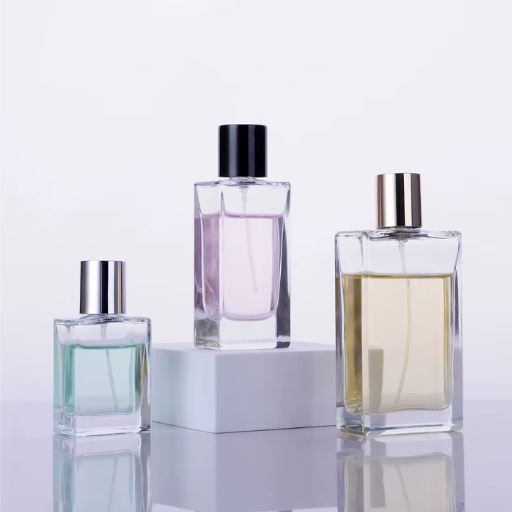
When selecting a perfume bottle supplier, several critical factors should be considered to ensure reliability and product quality. Focus on the supplier’s reputation and experience within the industry, as these can indicate their ability to meet specific requirements. Evaluate their manufacturing capabilities, including material quality, design options, and customization services, to align with your brand’s vision. Additionally, assess their production capacity and lead times to guarantee consistency in inventory supply. Lastly, confirm their compliance with relevant safety and environmental regulations to ensure ethical and sustainable practices.
What to Consider When Selecting a Perfume Bottle Manufacturer?
When selecting a perfume bottle manufacturer, I focus on several key factors to ensure they meet industry standards and align with my needs. Firstly, I look for manufacturers that offer high-quality materials such as durable glass or eco-friendly alternatives like post-consumer recycled plastics. The choice of material significantly impacts the bottle’s resistance to breakage and its aesthetic appeal. Additionally, I evaluate their design and customization capabilities. This includes checking if they provide options for advanced decorative techniques such as frosting, screen printing, or metallization to create unique branding opportunities.
Secondly, I consider their production capacity and lead times. A reliable manufacturer should be able to produce consistent quantities within the agreed timelines while accommodating fluctuations in demand. I also verify that they adhere to established technical standards for bottle necks and closures, such as DIN 18 or GPI 15/400, to ensure compatibility with atomizers and caps.
Finally, I ensure they comply with safety and environmental regulations, including certifications like ISO 9001 for quality management and ISO 14001 for environmental management systems. These certifications reflect adherence to industry best practices and sustainable operations, which are increasingly important in today’s market. By reviewing these technical and operational aspects, I can confidently select a manufacturer that suits both my product and brand requirements.
How to Ensure Quality Control in Perfume Packaging?
To ensure quality control in perfume packaging, it is essential to establish stringent inspection procedures across the production process. This includes material verification to confirm compliance with safety and durability standards, as well as rigorous tests for leak prevention and seal integrity. Employing advanced quality management systems (such as ISO 9001) ensures a standardized approach to quality checks, while conducting drop tests and environmental stress tests helps validate packaging resilience. Additionally, implementing visual inspection protocols ensures aesthetic consistency, crucial for maintaining brand identity. Leveraging automation and real-time monitoring technologies can further enhance accuracy and efficiency in identifying defects.
What Are the Latest Trends in Perfume Bottle Design?
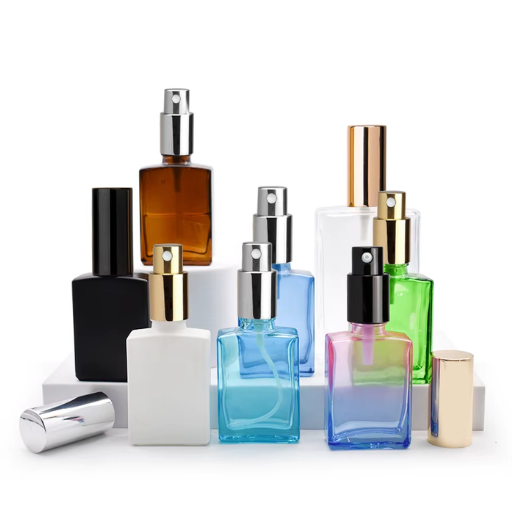
The latest trends in perfume bottle design reflect a balance between aesthetics, sustainability, and innovation. Minimalist designs with clean lines and understated elegance continue to dominate, signaling a shift towards sophistication and timeless appeal. Additionally, sustainable materials such as recycled glass, biodegradable plastics, and refillable designs are becoming integral to align with eco-conscious consumer preferences. Technological integration is also gaining traction, with features like NFC tags enabling consumers to access product information or authenticity verification. Furthermore, personalized designs, including customizable engravings or modular components, are elevating the user experience by fostering a sense of exclusivity and connection with the brand. These trends underscore the evolving demands for both visual allure and functional responsibility in modern perfume bottle design.
How Are Custom Perfume Bottles Tailored to Market Needs?
Custom perfume bottles are tailored to market needs by blending aesthetic appeal with practical functionality, reflecting consumer preferences and market trends. Designers strategically use unique shapes, premium materials like glass or metal, and innovative features to ensure the packaging conveys luxury and differentiation. Additionally, sustainability is a key driver, with brands incorporating recyclable or refillable components to appeal to eco-conscious consumers. Advanced technologies, such as 3D printing and digital printing, allow for intricate customizations that resonate with niche audience segments, while limited edition designs and collaborations create exclusivity. Overall, these tailored approaches not only enhance brand identity but also align with evolving consumer demands for personalization and environmental responsibility.
What Innovations Exist in Perfume Packaging Solutions?
Modern perfume packaging has embraced a range of innovative solutions that combine functionality, aesthetics, and sustainability. Key advancements include:
- Eco-Friendly Materials
The use of biodegradable materials (e.g., polylactic acid, molded pulp) and recyclable options like glass and aluminum has gained traction. These materials are chosen for their minimal environmental impact, adhering to global sustainability standards such as ISO 14001.
- Refillable and Modular Packaging
Refillable bottle systems reduce waste, allowing consumers to replenish perfume without purchasing new packaging. Modular designs also enable brands to replace or swap components like caps or pumps, reducing the need for complete replacements.
- Advanced Manufacturing Techniques
- 3D Printing: Enables the rapid prototyping and production of complex geometric designs, enhancing customization and exclusivity.
- Digital Printing: Facilitates high-resolution labels and engravings with precision, catering to personalization demands.
- Lightweight Engineering: Optimizes material usage to reduce overall package weight while maintaining durability, decreasing both costs and carbon footprint during shipping.
- Smart Packaging Technologies
Incorporation of NFC (Near Field Communication) chips and QR codes allows integration of interactive features, enabling customers to access product authenticity, sourcing details, or brand stories via their smartphones.
- Pressure-Controlled Dispensers
Innovations such as controlled atomizers and airless pump mechanisms ensure uniform spray distribution and extend product shelf life by minimizing exposure to air.
These advancements reflect a strategic alignment with consumer preferences for personalization, premium quality, and environmental responsibility while incorporating technical improvements that meet the demands of the modern market.
How Does Hot Stamping Enhance Luxury Perfume Packaging?
Hot stamping elevates the appeal of luxury perfume packaging by providing an exquisite, high-quality finish that resonates with sophistication and exclusivity. This process involves applying a metallic or pigmented foil to the surface using heat and pressure, creating a striking visual and tactile effect. The technique enables precise application of intricate designs, logos, or text, which contributes to brand differentiation and enhances consumer perception of elegance and value. Additionally, hot stamping offers durability, ensuring that the packaging retains its premium aesthetic over time while being compatible with a variety of materials, including glass, plastics, and paperboard. Its sustainable aspect can also align with eco-conscious brand strategies, as foils used in hot stamping produce minimal environmental impact when properly sourced.
Why Is Custom Design Important for Unique Perfume Identity?
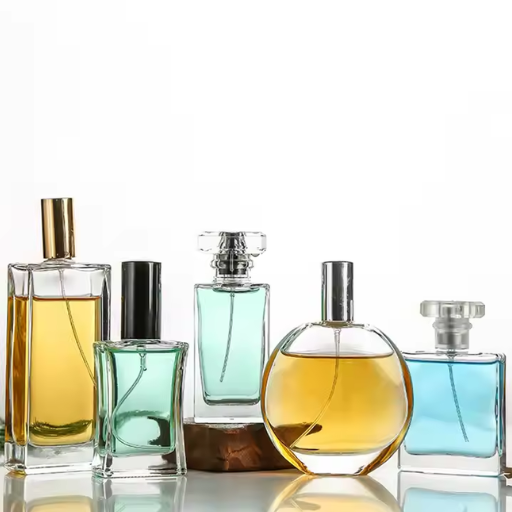
Custom design is crucial for establishing a unique perfume identity as it differentiates the product in an increasingly competitive market. It allows brands to convey their story, values, and target audience through personalized elements such as bespoke packaging, innovative bottle shapes, and distinctive typography. These design choices not only create a memorable visual impression but also reinforce brand recognition and emotional connections, ultimately enhancing consumer loyalty.
How Does Customized Perfume Bottles Affect Brand Perception?
Customized perfume bottles significantly influence brand perception by establishing a unique and memorable identity that resonates with target audiences. According to leading sources, bespoke designs enable brands to effectively communicate their values and exclusivity, appealing to both emotional and aesthetic preferences of consumers. Distinctive elements such as intricate details, ergonomic designs, and sustainable materials not only enhance the luxury appeal but also align with modern consumer demands for functionality and environmental consciousness. This personalization fosters a deeper connection with the brand, elevates perceived value, and ensures a competitive edge in the marketplace.
What Are the Key Features of a Custom Perfume Bottle?
- Unique Design Aesthetics – Custom perfume bottles feature distinctive shapes, patterns, and finishes tailored to reflect the brand identity or individual style. This can include intricate engravings, custom color schemes, or artistic embellishments that set the bottle apart.
- Premium Materials – High-quality materials such as crystal, hand-blown glass, or metal accents elevate the bottle’s luxury appeal while ensuring durability and a refined tactile experience.
- Functional Ergonomics – Thoughtfully designed bottles incorporate ergonomic considerations, such as easy-to-hold forms, well-crafted spray mechanisms, and secure caps, ensuring optimal usability without compromising elegance.
- Personalized Branding Elements – Incorporation of logos, monograms, or embossed designs strengthens brand recognition and adds a bespoke touch that resonates with targeted markets.
- Sustainability Integration – Many custom perfume bottles utilize eco-friendly components, such as recycled glass or refillable designs, addressing modern consumer preferences for environmentally conscious products.
Reference Sources
-
Calaso’s Premium Glass Perfume Bottles – Offers a range of premium glass packaging solutions for the fragrance industry.
-
Abely’s Tailor-Made Perfume Bottles – Specializes in custom perfume bottle projects and luxury packaging.
-
Packamor’s Sustainable Perfume Packaging Solutions – Focuses on eco-friendly and sustainable packaging options.
-
Aurramist’s Eco-Friendly Perfume Revolution – Discusses trends in recyclable and biodegradable perfume packaging.
Frequently Asked Questions (FAQs)
Q: What are the benefits of using glass perfume bottles for fragrances?
A: Glass perfume bottles offer an elegant and durable packaging solution for fragrances. They preserve the integrity of the scent, protect against UV rays, and add a luxurious touch to any perfume collection.
Q: How can I find reliable perfume bottle manufacturers and suppliers?
A: To find reliable perfume bottle manufacturers and suppliers, look for companies with a proven track record in the industry, positive customer reviews, and a wide range of glass products including custom bottles and standard bottle options.
Q: What options are available for wholesale perfume bottles?
A: In addition to empty perfume bottles, roll-on bottles, and spray bottles, wholesale perfume bottles are available in numerous styles and sizes. Buying in bulk usually decreases the price which provides the option to customize designs as well as closures.
Q: Why should I consider purchasing perfume bottles in bulk?
A: For many businesses seeking to develop their own perfume line, purchasing perfume bottles in bulk can be very beneficial economically. In addition, it allows for versatile stock to cater to varying customer demands which increases the sales potential.
Q: What is the significance of closures in cosmetic packaging?
A: Closures are essential in cosmetic packaging as they ensure the fragrance remains sealed and fresh. They also enhance usability, as seen in spray bottles and roll-on designs, which provide convenient application methods.
Q: Are there any environmentally friendly options for perfume bottles?
A: Yes, many manufacturers offer perfume bottles made from recyclable materials such as clear glass and crystal. Choosing such environmentally friendly options can reduce environmental impact while maintaining the quality of your fragrance packaging.
Q: Can I customize my perfume bottles collection?
A: Absolutely! Many manufacturers offer customization services for perfume bottles, allowing you to create unique designs that reflect your brand. This includes options in shape, color, and decoration to complement your custom fragrance.
Q: What are some popular sizes for small perfume bottles?
A: Small perfume bottles often come in sizes like 5ml, 10ml, and 15ml, which are perfect for travel or sample-sized colognes. These sizes are convenient for customers who prefer portability or want to try a range of fragrances.
Q: How do I choose between a standard bottle and a custom bottle design?
A: The choice between a standard bottle and a custom bottle design depends on your branding needs and budget. Standard bottles are cost-effective and readily available, while custom designs offer a unique branding opportunity but may require a higher investment.

